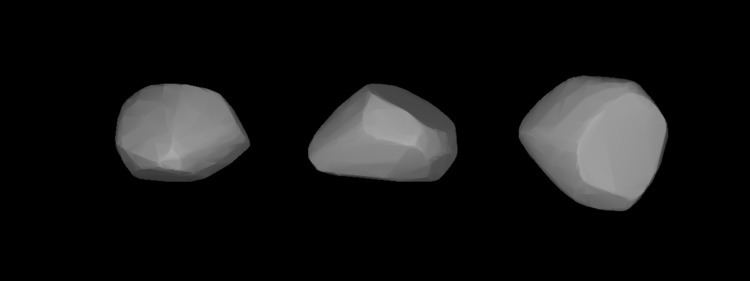Discovery date August 13, 1861 Aphelion 484.945 Gm (3.242 AU) Semi-major axis 412.176 Gm (2.755 AU) Orbits Sun Discoverer Robert Luther | Minor planet category Main belt Perihelion 339.408 Gm (2.269 AU) Discovered 13 August 1861 | |
 | ||
Discovered by Karl Theodor Robert Luther Similar Robert Luther discoveries, Other celestial objects | ||
71 Niobe (/ˈnaɪ.əbiː/ NY-ə-bee) is a large, slowly rotating main-belt asteroid. It was discovered by the German astronomer Robert Luther on August 13, 1861, and named after Niobe, a character in Greek mythology. In 1861, the brightness of this asteroid was shown to vary by German astronomer Friedrich Tietjen.
In 2006, it was examined by radar using the Arecibo Observatory radio telescope in Puerto Rico. This was supplemented by optical observations intended to build a lightcurve. The resulting estimated rotation period of 35.6 hours, or 1.48 Earth days, superseded an earlier estimate of the rotation period as 14.3 hours. The radar data produced an estimate of a maximum equatorial diameter of 94 km, which is consistent with earlier estimates based upon infrared data if the shape is assumed to be slightly elongated.
The rotation period was further refined to 35.864 ± 0.001 hours during observations through 2010. Six stellar occultations of this asteroid between 2004 and 2007 produced chords ranging from 13–72 km (8–45 mi), which are statistically consistent with the published maximum diameter estimates.
